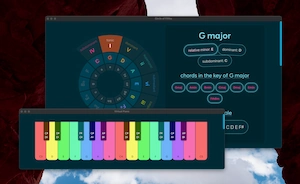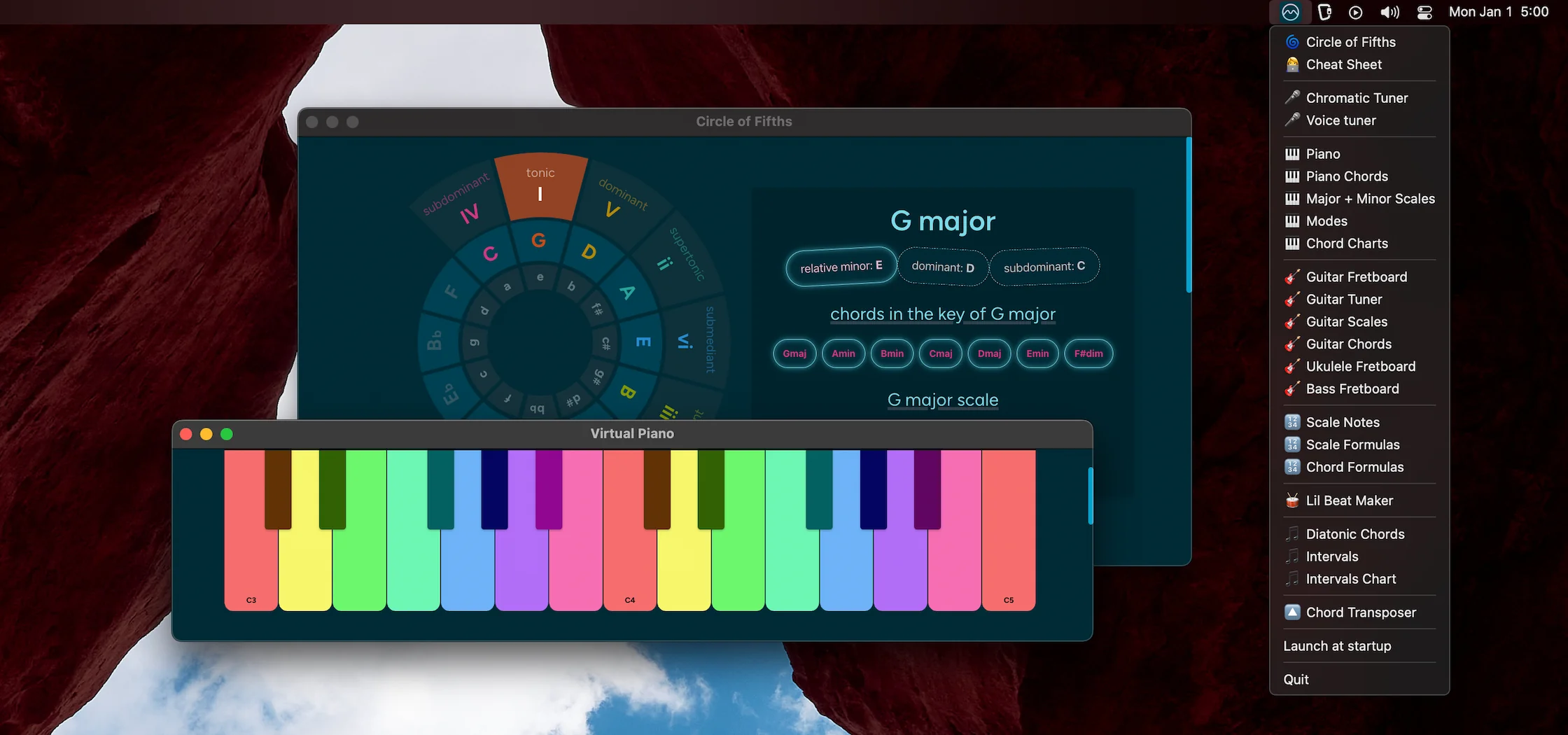Chord Functions in Functional Harmony
In functional harmony, diatonic chords have one of three possible functions:
tonic, subdominant or dominant. Tonic chords
are the 🏡 home chords, and then we venture out to subdominant chords, which
want to resolve to a dominant chord and finally dominant chords want to
resolve back home to a tonic chord.
On this page you can visualize the diatonic chords that fullfil each chord
function and play these chords in any of the major or natural minor keys.
The main tonic chord is the I chord, the main
subdominant chord is the IV chord and the main
dominant chord is the V chord.
You may also like this music theory cheat sheet.
Tonic Chords
I
C major C E Giii
E minor E G Bvi
A minor A C EI
C major C E Giii
E minor E G Bvi
A minor A C Ei
Cm C E♭ GIII
E minor E G BSubdominant Chords
IV
F major F A Cii
E minor E G Biv
F major F A CVI
E minor E G Bii°
E minor E G BDominant Chords
V
G major G B Dvii°
E minor E G BV
G major G B Dv
G major G B DVII
G major G B Dvii°
E minor E G BMajor V chord in a minor key
The harmonic minor scale has a raised 7th scale degree compared to the natural minor scale , which makes that 7th scale degree into a leading tone and makes the V chord a major chord.
In functional harmony, that V chord from the harmonic minor scale is used most often because the leading tone, being just one semitone away from the tonic, gives a stronger sense of wanting to be resolved to the tonic.



